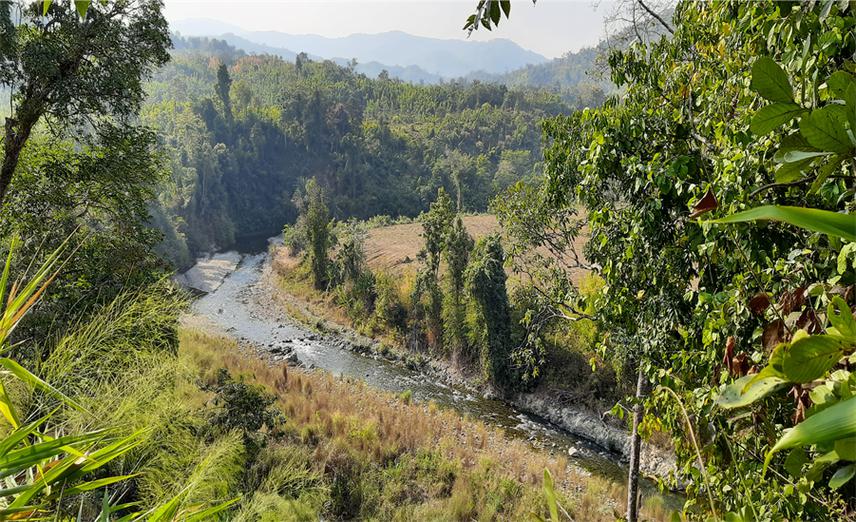Letkhosei Baite
Fresh-water ecosystems, especially rivers are the most threatened biome globally. Rivers and their biodiversity and ecosystem services are relatively undervalued and neglected, exposed to pollution, habitat degradation, and over-exploitation. This project will be carried out along the Tuivang River and its catchment areas in the state of Manipur. Tuivang River is part of the Chindwin River Basin. This is one of the few free-flowing rivers remaining in the country and is important for maintaining aquatic biodiversity and providing various ecosystem services. However, this riverine ecosystem is facing threats in the form of habitat modifications due to logging.

Secondary forests in the catchment area of the Tuivang River. © Letkhosei Baite
Historically, the Tuivang River and its catchment areas have been actively managed and used by local communities. Local communities widely practised shifting cultivation and selective logging. However, over the years, the number of shifting farmers has drastically decreased, and selective logging has been replaced by mechanized clear-felling of large tracts of forests. Anecdotal evidence suggests that this clear-felling on steep slopes has resulted in increased soil erosion and sediment loads in rivers. Local people have also reported increased flood events along the Tuivang River in recent years, which could be related to logging as degraded forests reduce rain-water infiltration and increase runoff which corroborates the findings of Krishnaswamy et al. (2012). Our project aims to document floristic diversity in the remnant forest patches and improve the health of forests and facilitate the community-initiated restoration activity along the Tuivang River in Manipur.
In this project we will identify potential sites for undertaking restoration activities in the catchment area of the Tuivang River. Village nurseries will be established to facilitate restoration activity in future. By raising economically beneficial plants, and through regular education and awareness campaigns, this project will try to reduce people’s dependence on forests and thereby reduce further forest degradation. Restoration will help in rejuvenating streams and rivers and will benefit biodiversity conservation in the long run.